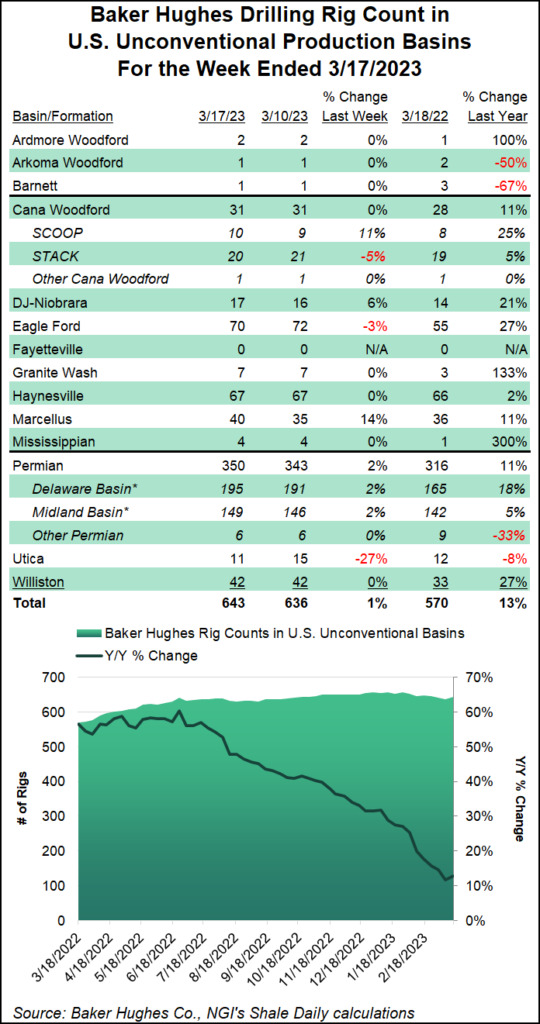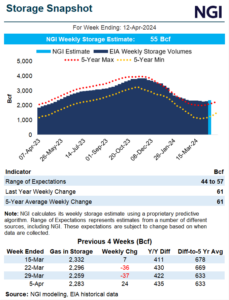A sharp increase in natural gas-directed drilling saw the U.S. rig count rise eight units to 754 during the week ended Friday (March 17), according to the latest tally from Baker Hughes Co. (BKR).
Total natural gas-directed rigs increased by nine domestically, partially offset by a decline of one oil-directed unit. Land drilling increased by five, with total offshore rigs up three, including a two-rig increase in the Gulf of Mexico. Directional units increased by five overall, with total vertical rigs up three; horizontal drilling totals were unchanged for the week.
The combined 754 active U.S. rigs as of Friday compares with 663 rigs running in the year-earlier period, according to the BKR numbers, which are partly based on data from Enverus.
The Canadian rig count tumbled 16...



